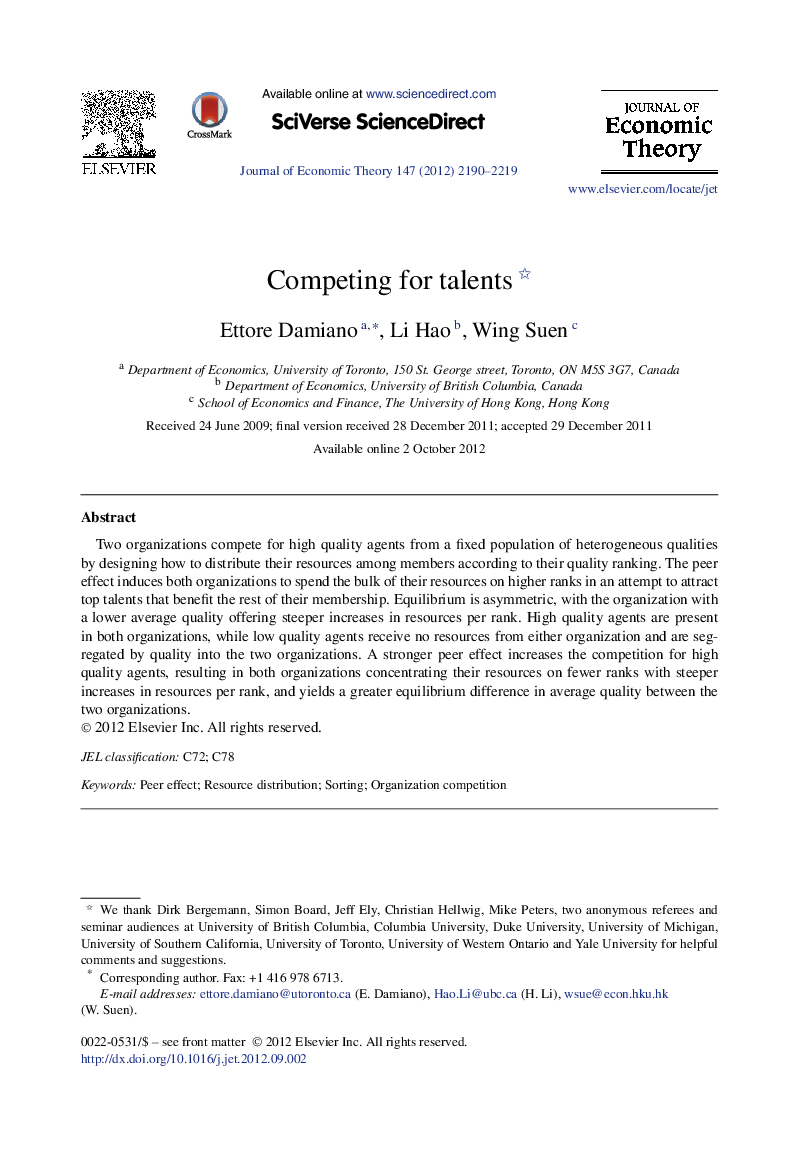| Article ID | Journal | Published Year | Pages | File Type |
|---|---|---|---|---|
| 957279 | Journal of Economic Theory | 2012 | 30 Pages |
Abstract
Two organizations compete for high quality agents from a fixed population of heterogeneous qualities by designing how to distribute their resources among members according to their quality ranking. The peer effect induces both organizations to spend the bulk of their resources on higher ranks in an attempt to attract top talents that benefit the rest of their membership. Equilibrium is asymmetric, with the organization with a lower average quality offering steeper increases in resources per rank. High quality agents are present in both organizations, while low quality agents receive no resources from either organization and are segregated by quality into the two organizations. A stronger peer effect increases the competition for high quality agents, resulting in both organizations concentrating their resources on fewer ranks with steeper increases in resources per rank, and yields a greater equilibrium difference in average quality between the two organizations.
Related Topics
Social Sciences and Humanities
Economics, Econometrics and Finance
Economics and Econometrics
Authors
Ettore Damiano, Li Hao, Wing Suen,
